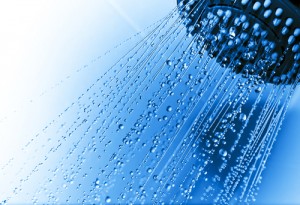 A Hot Water Heater That Can’t Deliver on a Promise of Hot Water Needs Attention
A Hot Water Heater That Can’t Deliver on a Promise of Hot Water Needs Attention
Can you barely make it through your shower before the hot water is gone? Is washing dishes a challenge with dwindling hot water? Is “hot” water a bit of a misnomer at your house? If so, it’s probably time to take a look at your water heater.
While some water heater issues are best left to an HVAC professional, there are some things you can do yourself if your water heater’s underperforming.
- Insulate the heater. Is your water heater located in an unheated basement area or utility room? If so, the unit is having to work hard during the cold winter months to deliver that hot water on demand. Save energy dollars and increase the amount of hot water available by insulating your water tank. Most home improvement stores sell specially-designed, insulated blankets that fit snugly over water tanks.
- Don’t forget the pipes. In addition to the tank, your heated water may be losing its warmth traveling through cold pipes. If the pipes leading from the water heater are in a cold part of the house, consider buying special insulation wraps to help keep the water in them warm.
- Is it the element? Your hot water challenges may be caused by a problem with the heating elements (on electric heaters), pilot light or thermostat. Have someone check these three essentials to make sure they’re functioning properly.
If you’ve checked these three common trouble spots and your water is still lukewarm at best, it’s probably time to call an HVAC professional to identify the source of the problem.
If your water heater’s underperforming or you need help with other mechanical systems in your Long Island home, give T.F. O’Brien Cooling & Heating a call. We’ve been helping homeowners throughout Long Island with their heating and cooling needs since 1934.
Our goal is to help educate our customers about energy and home comfort issues (specific to HVAC systems). For more information about other HVAC topics, download our free Home Comfort Resource guide.
Image via Shutterstock.com

 Time to Seal Things Up for Long, Cold, Long Island Winter Days
Time to Seal Things Up for Long, Cold, Long Island Winter Days